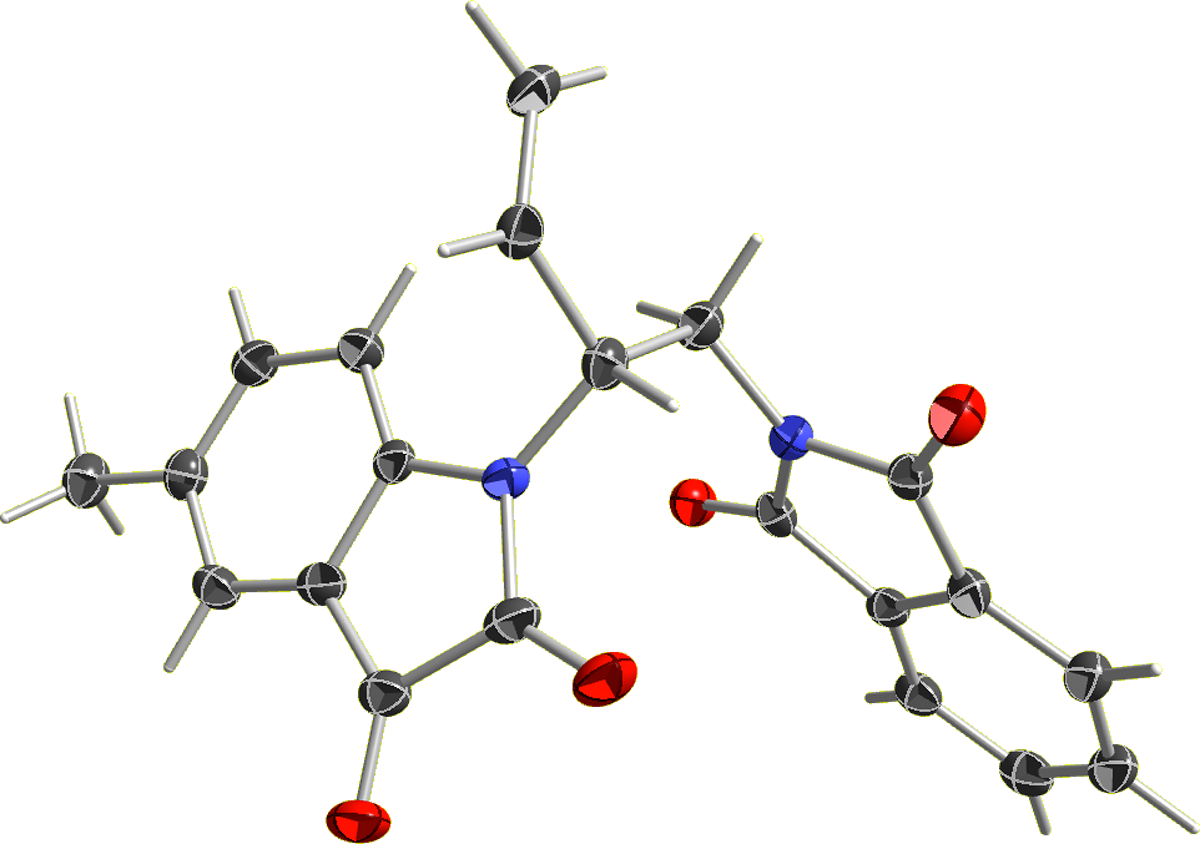1/7: Introduction
Sometimes it makes good sense to use an unconventional space group setting. Probably the most common examples are P21/n and I2/a (instead of P21/c and C2/c). Such settings are preferred if they give a monoclinic β angle that is closer to 90° than the standard setting. Other common reasons for alternative settings stem from the inherent advantage of using the same (or similar) crystal axes for isotypic structures, or for those related by phase transition(s).This tutorial describes a situation in which an unconventional setting, B21, is preferred using SHELXL because it facilitates efficient refinement of a pseudo-hexagonal three-fold twin. Given the complexity of the problem, this tutorial goes into some detail, not all of which will be relevant (or perhaps comprehensible) to all readers. The crystals in question are of 1-{(R)-1-[(3-oxo-2-isoindolinoyl)methyl]-2-propenyl}-5-methyl-2,3-indolinedione, (C21H16N2O4), a chiral compound from the laboratory of Prof. Barry Trost at Stanford University. The molecular structure looks like this:
